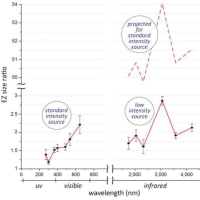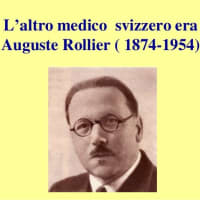注意
このラッセル L. ブレイロック博士の論説は、博士のサイトに掲載されていたものをブログ著者が翻訳したものです。
現在は、博士のサイトは閉鎖されています。
Russell Blaylock :From Wikipedia, the free encyclopedia
https://en.wikipedia.org/wiki/Russell_Blaylock
ミクログリア活性化と神経変性: ラッセル L. ブレイロック博士の論説
Microglial Activation and Neurodegeneration、Russell L. Blaylock, M.D.
http://www.russellblaylockmd.com/
Microglia are the resident immune cells in the central nervous system.
ミクログリアは、中枢神経系内の内在性の免疫細胞である。
Normally they remain in a quiescent state.
通常は、それらは不活発な状態のままである。
When stimulated, they become metabolically active and assume an ameboid profile, with an ability to move about the CNS.
刺激されると、代謝的に活性化し、アメーバ様の外形を示し、中枢神経系を動き回る能力を持つ。
Activation of microglia is quite easy and can be accomplished by a number of events, such as trauma, excitotoxic excitation, invasion of microorganisms, heavy metal toxicity, systemic immune activation and various pharmaceutical agents.
ミクログリアの活性化は非常に容易であり、数多くのイベント、例えば外傷、興奮毒による興奮、微生物の侵入、重金属の毒性、全身性の免疫活性化、種々の医薬品により起きる。
補足
ワクチンの成分は、「興奮毒による興奮、微生物の侵入、重金属の毒性、全身性の免疫活性化、種々の医薬品」に該当します。
(補足終わり)
Under most circumstances this activation is short lived and terminates rather abruptly.
大部分の状況では、この活性化は短命であり、どちらかといえば突然終了する。
Under such conditions, the microglia serves the function of any immune cell-that is, it releases immune cytokines, eicosanoids, free radicals, lipid peroxidation products and complement, which act to kill the invading organisms.
そのような状態では、ミクログリアは全ての免疫細胞の機能を果たし、即ち、免疫サイトカイン、エイコサノイド、フリーラジカル、脂質過酸化物、侵入する微生物を殺すように作用する補体を放出する。
In addition, microglia secrete several growth factors (brain derived growth factor and epidermal growth factor), which serves to repair any damage that might have been done.
さらに、ミクログリアは、幾つかの成長因子(脳由来成長因子BDGFと上皮成長因子)を分泌し、発生した全ての損傷を修復するために働く。
It also has ameboid, phagocytic activity, which allows these cells to remove cellular debris and dead or dying microorganisms.
それはまた、アメーバ様の食細胞の活性も持ち、細胞の破片、死亡した又は死にかけている微生物を除去する。
It can also remove soluble beta-amyloid, which can accumulate during such assaults.
そのような攻撃の際に蓄積する可溶性βアミロイドをも除去できる。
Because of their ability to move around and between neurons, they can specifically target the synaptic interface.
それらは動き回ったり、ニューロン間を動くことができるので、それらは特にシナプスの接合部分を攻撃できる。
In a great number of conditions, this synaptic unit is damaged and therefore is central to their pathophysiology.
非常に多くの状態で、このシナプス単位が損傷し、それ故、それらの病態生理学の中心である。
On occasion, the activation of microglia is not terminated and a state of chronic activation occurs.
時々、ミクログリアの活性化が終了せず、慢性的活性化の状態が起きる。
When this happens, significant damage can occur to a number of brain microstructures, especially synaptic connections and dendrites.
これが起きる時、数多くの脳の微細構造、特にシナプス結合と樹状突起に重大な損傷が起きる。
While short term microglial activation can be neuroprotective (because of the secreted growth factors) chronic activation appears to be neurodegenerative.
(成長因子の分泌により)短期のミクログリア活性化は神経保護的であるが、慢性的活性化は神経変性的であるように見える。
Newer studies have shown that chronic microglial activation occurs in a number of pathological states, including CNS trauma, infections, heavy metal toxicity, pesticide exposures. neurodegenerative diseases, autism, Down’s syndrome and over-vaccination.
新しい研究は、慢性のミクログリア活性化は数多くの病理状態で起きることを示しており、それらは中枢神経系外傷、感染、重金属毒性、殺虫剤暴露、神経損傷疾患、自閉症、ダウン症候群、過剰ワクチン接種を含んでいる。
When microglia are activated, they also secrete two known excitotoxins-glutamate and quinolinic acid.
ミクログリアが活性化されると、2つの既知の興奮毒物、グルタミン酸とキノリン酸も分泌する。
In addition, they secrete a number of factors that are also known to enhance excitotoxicity, such as tumor necrosis factors-alpha (TNF-alpha), IL-1ß, IL-2, IL-4, IL-6 and IL-18, as well as interferons and other immune molecules.
さらに、それらは興奮毒性を増進することも知られている多数の因子を分泌する、例えば、TNFα、IL-1ß, IL-2, IL-4, IL-6, IL-18、インターフェロン、及びその他の免疫分子である。
A number of studies have shown that several of these immune factors greatly enhance excitotoxicity, especially TNF-alpha and IL-1ß-two inflammatory cytokines that are elevated in all of the neurodegenerative diseases as well as autism.
多数の研究が、これらの免疫因子の幾つかが著しく興奮毒性を増大させ、特に全ての神経損傷疾患と自閉症で増加する2つの炎症性サイトカインTNFαとIL-1βであることを示している。
Microglia also secrete a fatty molecule called arachidonic acid.
ミクログリアは、アラキドン酸と呼ばれる脂肪分子も分泌する。
This too enhances excitotoxicity.
これも興奮毒性を増進する。
Arachidonic acid release increases the production of inflammatory eicosanoids, primarily by the action of LOX and COX enzymes.
アラキドン酸放出は、主としてLOXとCOX酵素の作用により、炎症性エイコサノイドの産生を増大させる。
Studies have shown that glutamatergic neurons also contain COX enzymes and that excitotoxic destruction of neurons follows the presence of COX-2 enzymes.
グルタミン酸作動性ニューロンもCOX酵素を含んでいること、ニューロンの興奮毒性破壊がCOX2酵素の存在に引き続くことを研究は示している。
Blocking COX and LOX enzymes significantly reduces excitotoxicity.
COXとLOX酵素の阻害が、興奮毒性を大きく低下させる。
This accounts for some of the selectivity of excitotoxicity, that is, it will severely damage and/or kill some neurons and result in no harm to others close by.
このことは、興奮毒性の選択性の幾つかを説明している、即ち、幾つかのニューロンはひどく損傷及び/又は殺すが、近くの他のものには害がない。
Another damaging effect of chronic microglial activation, is a concept called by-stander damage.
別の慢性的なミクログリア活性化の損傷作用は、第三者損傷と呼ばれる概念である。
When the inflammatory cytokines, excitotoxins, eicosanoids, free radicals and lipid peroxidation products are released, they diffuse toward surrounding neurons and their dendrites and synapses.
炎症性サイトカイン、興奮毒物、フリーラジカル、脂質過酸化物が放出されると、それらは周囲のニューロンとそれらの樹状突起とシナプスに拡散する。
The longer the microglia are active, the greater and more widespread the damage becomes.
ミクログリアが長く活性化すればするほど、損傷は大きくそして広範囲に渡る。
So, why the selective damage?-that is, How can some neurons survive in such an environment?
それでは、選択的な損傷はなぜなのか? 即ち、そのような環境で、幾つかのニューロンは、どのように生き残るのか?
Studies have shown that neurons possessing strong antioxidant defenses, or lacking free radical-generative enzymes (such as NADPH oxidase) can escape the damage much longer than poorly protected cells and synaptic connections.
強い抗酸化防御を持っているか、またはフリーラジカル生成酵素(例えばNADPHオキシダーゼ)のないニューロンは、保護の弱い細胞やシナプス結合よりも、はるかに長く損傷を免れることを研究は示している。
Likewise, glutamatergic neurons have been shown to contain COX-2 enzymes, whereas protected neurons do not.
同様に、グルタミン酸作動性ニューロンはCOX-2酵素を含むことが示され、一方、保護されたニューロンは持っていない。
Blocking COX-2 has been shown to be neuroprotective in cases of excitotoxic activation, as mentioned.
既に述べたように、COX-2阻害は、興奮毒性活性化の場合には、神経保護的であることを示した。
This explains the dramatic reduction in Alzheimer’s disease seen in epidemiologic studies in those who regularly take NSAIDS.
疫学研究において、日常的にNSAIDsを服用する人では、アルツハイマー病の劇的な減少を、このことは説明している。
Experimentally, NASIDS and other COX-2 and LOX blocking drugs and natural products can significantly attenuate excitotoxic damage.
実験的には、NSAIDs及びその他のCOX-2及びLOX阻害薬と天然物は、興奮毒性損傷を大きく弱める。
In the excitotoxic cascade, PLA2 (phospholipase-A2) is activated by protein kinase-C, releasing arachidonic acid from the membrane of the neuron.
興奮毒性カスケードでは、PLA2(フォスフォリパーゼA2)が、プロテインカイネースCにより活性化され、ニューロンの膜からアラキドン酸を放出する。
LOX and COX enzymes convert arachidonic acid into leukotrienes and inflammatory prostaglandans, respectively.
LOXとCOX酵素は、アラキドン酸を、ロイコトリエンと炎症性プロスタグランジンに各々変換する。
It is these eicosanoids that generate the reactive oxygen and reactive nitrogen species (peroxyl, superoxide and hydroxyl radicals) that ultimately damage the mitochondria, endoplasmic reticulum and nucleus during excitotoxic cascade activation.
興奮毒性カスケード活性化の際に、最終的にミトコンドリア、小胞体、核を損傷する反応性酸素及び反応性窒素種(ペルオキシルラジカル、超酸化物、ヒドロキシルラジカル)を作るのは、これらのエイコサノイドである。
During the opening of the calcium channel (in NMDA and AMPA glutamate receptors) the excess intracellular calcium also activates nitric oxide synthetase (NOS), which generates excessive amounts of nitric oxide (NO).
(NMDA及びAMPAグルタミン酸受容体の)カルシウム・チャンネルの開口の際に、過剰な細胞内カルシウムも酸化窒素シンセターゼ(NOS)を活性化させ、それは過剰な量の酸化窒素NOを生成する。
The NO then reacts with superoxide to form peroxynitrite radical, which is a very powerful reactive nitrogen species (RNS).
それからNOはスーパーオキシドと反応し、パーオキシニトライト・ラジカルを形成し、それは非常に強力な反応性窒素種RNSである。
This RNS passes through the mitochondrial with great rapidity, and has been shown to be especially damaging to mitochondrial enzymes and mtDNA.
RNSは、非常に急速にミトコンドリアを通過し、ミトコンドリアの酵素とmtDNAに特に損傷を与えることが示された。
In essence, we see an interaction between eicosanoid production and nitric oxide production that ultimately results in a significant loss of mitochondrial energy production.
要するに、エイコサノイド産生と酸化窒素産生の間の相互作用があり、それは最終的にはミトコンドリアのエネルギー産生の重大な低下を起こす。
A number of studies have shown that neuronal energy loss, no matter the cause, greatly increases neuronal, dendritic and synaptic sensitivity to excitotoxin damage.
ニューロンのエネルギーの損失は、原因が何であれ、興奮毒による損傷に対するニューロン、樹状、シナプスの感受性を大きく増大させる。
In addition, some of the NSAIDS are known to be rather potent inhibitors of microglial activation.
さらに、幾つかのNSAIDsが、どちらかと言えば、ミクログリア活性化の強力な阻害剤であるとことが知られている。
This is especially beneficial in cases of chronic microglial activation.
これは、慢性のミクログリア活性化の症例で特に有益である。
It is also known that inhibition of microglial activation, once triggered, is dependent of certain cytokines, such as IL-10 and TGF-ß.
いったん引き金が引かれると、ミクログリア活性化の阻害は、IL-10とTGF-βのような特定のサイトカインに依存する。
Dysfunction in IL-10 activation, as seen with shifts from TH2 to Th1 cytokine activation, interfere with cessation of microglial activation.
IL-10活性化の機能不全は、TH2からTh1サイトカイン活性化へシフトに見られるように、ミクログリア活性化の停止を妨害する。
This switches microglia from a neuroprotective function to a neurotoxic one.
これは、ミクログリアを、神経保護機能から神経毒性機能に変換する。
In pathological states, such as Alzheimer’s dementia, Parkinson’s disease and autism, it may be that a loss or dysfunction in brain growth factors also plays a role.
アルツハイマー認知症、パーキンソン病、自閉症のような病的状態では、脳の成長因子の損失または機能不全も役割を果たしているであろう。
This would make microglia a source of inflammatory cytokines, complement, S100B, eicosanoids, arachidonic acid and excitotoxins, without the protective factors.
これが、ミクログリアを、保護因子の伴わない、炎症性サイトカイン、補体、S100B、エイコサノイド、アラキドン酸、興奮毒物の供給源にするであろう。
Reduced levels or dysfunction of antioxidant enzymes, such as catalase, SOD, glutathione reductase, glutathione peroxidase and glutathione itself would also greatly increase neuronal sensitivity to excitotoxicity and free radical and lipid peroxidation damage.
抗酸化酵素、例えばカタラーゼ、SOD、グルタチオン・リダクターゼ、グルタチオン・パーオキシダーゼ、グルタチオン自身の濃度低下または機能不全も、興奮毒性、フリーラジカル、脂質過酸化物損傷に対するニューロンの感受性を大きく増大させる。
As we have seen in my discussion of mercury toxicity, mercury not only is a powerful activator of microglial activity at micromolar or even submicromolar concentrations, but also at these same concentrations powerfully inhibits the glutamate transport proteins.
水銀毒性の議論で見たように、水銀はマイクロモルまたはマイクロモル以下の濃度でミクログリア活性の強力な活性化剤であるだけでなく、これらの同じ濃度でグルタミン酸輸送タンパク質を強力に阻害する。
At 0.5 uM we see a 50% reduction in glutamate uptake.
0.5 uMで、グルタミン酸取込の50%低下が起きる。
The majority of extracellular glutamate is taken up by the astrocyte, which is the site of the greatest mercury accumulation in the CNS.
大部分の細胞外のグルタミン酸は、アストロサイトにより取り込まれ、それは中枢神経系の最大の水銀蓄積部位である。
The microglia is the second most abundant site of mercury accumulation.
ミクログリアは、水銀蓄積が2番目に多い部位である。
Mercury also is a powerful inhibitor of glutamine synthase and glutamate dehydrogenase, both of which also play major roles in controlling extracellular glutamate levels.
水銀は、グルタミン・シンターゼとグルタミン酸・デハイドロゲナーゼの強力な阻害剤でもある、そして両者とも細胞外のグルタミン酸濃度のコントロールに大きな役割を演じる。
At lower concentrations of glutamate, glutamine synthase is the most important mechanism for astrocyte glutamate clearing.
低い濃度のグルタミン酸、グルタミン・シンターゼは、アストロサイトのグルタミン酸の取り除きの最も重要なメカニズムである。
But at higher levels, glutamate dehydrogenase becomes more important.
しかし高濃度では、グルタミン酸デハイドロゲナーゼがより重要である。
So, we can see that a single heavy metal can powerfully interfere with glutamate clearance by a number of mechanisms, resulting in excitotoxicity.
1つの重金属が、数多くのメカニズムによりグルタミン酸除去を強力に妨害し、興奮毒性を起こすことがわかる。
In addition, mercury is a powerful inhibitor of mitochondrial enzymes and interferes with mitochondrial membranes function, both of which reduce neuronal energy production, as well as energy production by astrocytes and microglia.
さらに、水銀はミトコンドリア酵素の強力な阻害剤であり、そしてミトコンドリアの膜機能を妨害し、これら両方がニューロンのエネルギー産生、アストロサイトとミクログリアのエネルギー産生を低下させる。
This energy loss, as we have seen, magnifies excitotoxicity.
見てきたように、このエネルギー損失が、興奮毒性を増大させる。
Mercury is not the only thing that can precipitate these chains of events.
これらの一連の事象を妨害するのは水銀だけではない。
Pesticides, other heavy metals, elevated free radical presence, 4-hydroxynonenal, infectious organisms, glutamate itself, other excitotoxins and oxidized LDL-cholesterol in the brain can have the same effect.
脳内の農薬、他の重金属、フリーラジカルの増加、4ヒドロキシノネナール、感染性の有機体、グルタミン酸自身、他の興奮毒物、酸化LDLコレステロールが同じ効果を持つ。
It is the synergistic effects of a number of environmental and metabolic toxins that, in my opinion, results in the neurodegenerative diseases, autism, Down’s syndrome and a number of other neurological conditions.
私の見解では、数多くの環境及び代謝毒物の相乗作用が、神経損傷疾患、自閉症、ダウン症候群、数多くのその他の神経状態を起こす。
Yet, central to the process in all these conditions is chronic microglial activation.
しかし、これら全ての状態のプロセスの中心は、慢性的なミクログリア活性化である。
以上
























